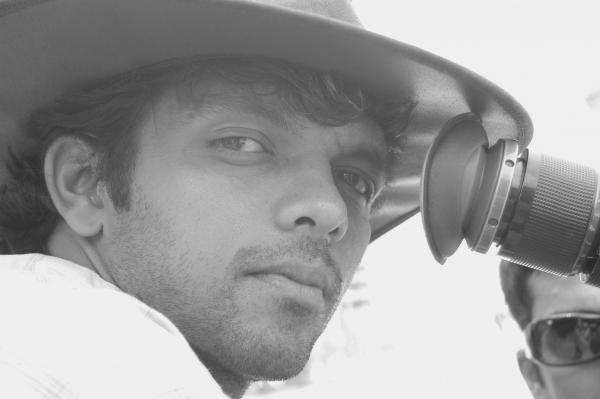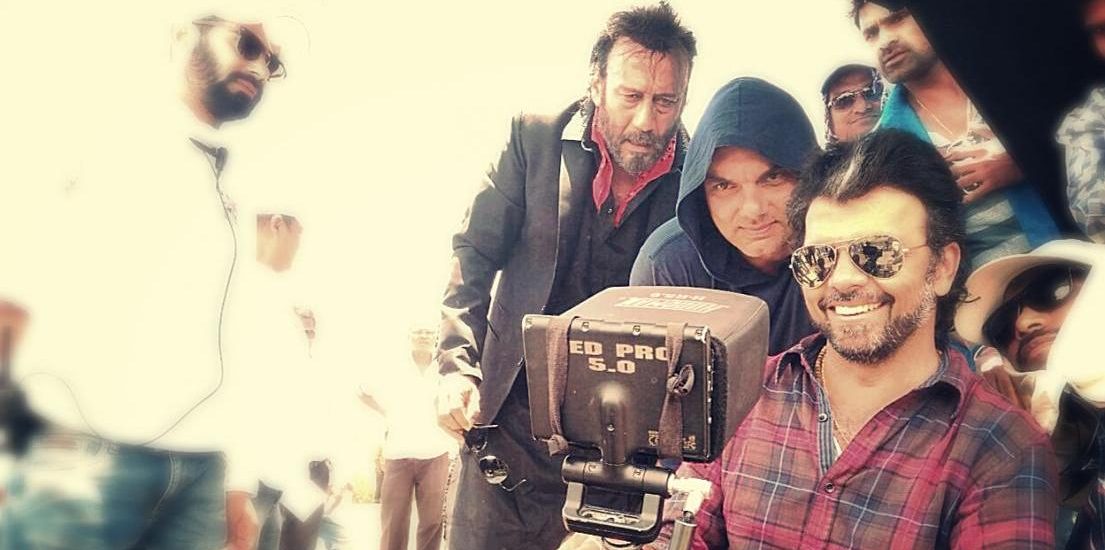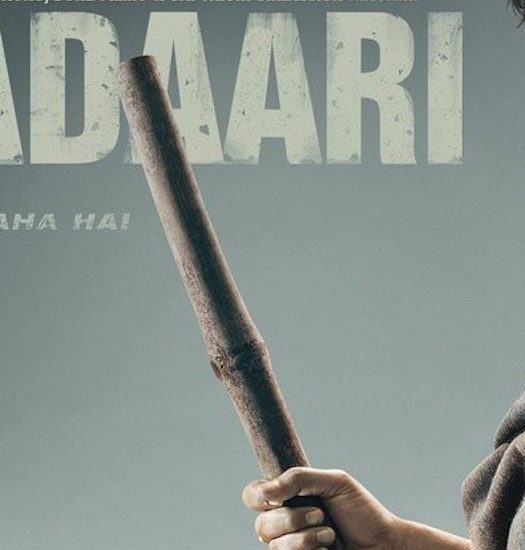Main task was getting correct angles for golf sequences: Mahesh Limaye
We are a country obsessed with cricket. So much so that from a stick to a broom to a golf club we can play cricket with anything. The upcoming film Freaky Ali by Sohail Khan Productions starts with this obsession, eventually turning the protagonist into a golfer. Mahesh Limaye, the Director of Photography, talks to Pandolin about his experience of working on India’s first full-fledged film around golf.

Mahesh Limaye
How did you choose this project?
I am very close to Sohail (Khan), Arbaaz (Khan) and Salman (Khan). When I got a call from their office about Sohail making a different film about a sport, I was excited. I went to their office and heard the narration. I found the narration quite gripping and when I was told that the protagonist of the film would be Nawazuddin Siddiqui I was quite thrilled about the project. I love the way Nawazuddin performs.
READ: REGULAR CHARACTERS NEVER FASCINATE ME – NAWAZUDDIN SIDDIQUI
How did you do the homework for this project? Any reference film or text that you referred to?
We did not have any particular film reference. This is the first time in India that anyone has attempted a full-fledged film around golf. If there were any, we would have loved to refer to them. This film is not as big as a Dabangg. But my approach was to give a larger scale to the film. Whatever the story demanded, we had to get it right. We shot the entire film in 38 days, which is a record time for any of Sohail’s films.
When I was narrated the story, I knew that the most important homework would be to learn the sport. We visited many golf courses during our research. In India, Golf is not like cricket. People aren’t familiar with its rules. For us also it was absolutely necessary to understand it completely, to film it perfectly. We had Siddharth from Delhi who is a ProGolfer. He was our instructor.
This is the first time in India that anyone has attempted a full-fledged film around golf
What was Sohail Khan’s brief to you?
He wanted a very realistic look. This guy (Nawazuddin’s character) is an undergarment seller from a local basti who is into extortion. Golf comes in his life as a result of circumstances. So, Sohail wanted a rustic look. We created a basti in Kamalistan Studio. A huge portion from the film was shot there. Sohail completely trusted me on shooting such a location as I have worked extensively on such locations with Madhur Bhandarkar in the past. I was given complete freedom over visuals for this film. We shot for 17 days in Kamalistan. It was a very raw feel.
On the contrary, the golf sequences had a polished look. But our protagonist was the odd man in the company of otherwise elite people. I was briefed to capture that irony.
WATCH: FREAKY ALI | POSTER & TRAILER
Your thoughts on Sohail Khan as a director.
I have worked with many directors in the past. But I find him the coolest. His demands are different. He has clarity and is less demanding. But having said that, he kept a window for improvisations on set. He would come up with a crazy idea every now and then. He is not too pushy as a director. It makes life easier for everybody on set.
Sohail would come up with a crazy idea every now and then
The film shows the character’s transition from an extortionist to a professional golfer. Is there a visual transition also?
Yes, when he is a small town guy the visuals are more contrasting. When he starts growing professionally, the entire surrounding changes. He lives in the same house but we uplift the house by a few notches. The colour scheme changes. The colours of the clothing change. When he is in the basti he wears lots of browns and deeper blues. The house is also grungy. As the story progresses, vibrant colours come in. These are small changes that help in showing a transition. And the audience will feel it as well.

Freaky Ali Poster
A significant portion of the film was shot on a golf course. What steps did you take in terms of framing for it to not look visually redundant?
It was quite a task. When the first schedule of the film was made, it was for 65 days. Every film has a certain budget and this plan was going way overboard. So I came up with the idea of shooting the entire film on two cameras. Sohail also liked the idea. The last couple of films that I have shot were with a multi-camera setup. It really works as it keeps your actors in their character. Since, there is not too much of a gap between the shots. When I have to go close after the master shots I just have to diffuse the light a bit. After we were done shooting in Kamalistan we shifted to shooting golf.
Sohail suggested that for the golf we shoot on a 3-camera setup. It was like a real game going on with different odd angles. In sports films, you frame entire shots to see the balance of the frame. Here he wanted a more real look. So we used to shoot the game like an everyday routine for players. I used a lot of telephoto lens. There are wide shots as well to show the expanse. But most of it is tele. It was fun shooting an actual game. All these golf courses are 18-hole golf courses spread over 150 acres. To push the unit and get them going was a task. But we managed.
READ: OUR INTENTION WAS NOT TO FOLLOW A TREND OF DOIGN A SPORTS-CENTRIC BIOPIC – SAIWYN QUADRAS
Did you refer to actual golf matches for their shooting scheme?
When I came on board, I started watching golf on television extensively. I got myself hooked to the Ten Golf sports channel. I also saw wonderful documentaries around golf on that channel. But having said that, our story and feel was completely different. I have learnt a lesson from the foreign DOP’s that I have worked with. They believe that whatever you research should be in sync with the narrative. So, I was clear that I had to keep a visual balance with respect to the screenplay. I made sure that the visuals follow the story all the time. Sometimes you find that in films, the visuals are too glossy. I made sure that I balance that as well for this film.
I was clear that I had to keep a visual balance with respect to the screenplay
How did you’ll zero down on the locations?
Getting golf courses was difficult. But thankfully, there are many golf courses in Delhi. We shot in four different golf courses there. Every weekend people would come to play so we were given only a certain number of holes to shoot. But people were cooperative and helped us a lot on the location.
The final golf sequence was shot in Oxford Golf Course, Pune. It is one of the top ten golf courses in Asia. It is a beautiful location surrounded by hills. The only problem was shooting in the heat.
And what was the lighting design for the golf sequences?
I did not light the golf course. It was completely shot in natural light. We had a couple of night sequences and for them we used already installed floodlights. It was apt for the realistic look of our film.
READ: MY LENSING AND LIGHTING WAS A REACTION TO THE PERFORMANCES – AVINASH ARUN
What determined your choice of camera and lens for this film?
As I spoke earlier, we shot with a 3-camera setup. I shot on three sets of Red Dragon cameras with an entire set of Master Prime lens with Optimo zoom lens.

A still from Freaky Ali
Are there more of steadicam shots in the film or you’ve gone handheld as well?
There are lots of steadicam shots but we have refrained from using too much of handheld. I wanted the audience to feel that they are on the golf course. I have kept this feeling of search throughout the film. There are very few blocks where the camera is static. Even if it was on a tripod it was breathing.
I wanted the audience to feel that they are on the golf course
Were there any technical obstacles while shooting? How did you overcome them?
The main task was getting correct angles for the golf sequences. Unlike cricket, here the ball is always on the grass. It travels mostly on the ground. So, before the shoot, Sohail and I went to research on the topography and accordingly framed the sequences.
Since a lot of people don’t know the rules of the sport, how did you balance between shooting the actors and the sport?
In the writing stage itself there was a clarity that we couldn’t be on a golf course all the time. It is a slow game. You need a lot of concentration. There is a lot of walking involved in this sport. So, as a tool, montages are used extensively.
READ: HINDI CINEMA’S MOST INSPIRING SPORTS MOVIES
Tell us about your team on this film
I have my team, which includes Rohan Madkaikar who is from Arts School. S.A.Basar is my main man. He has been working with me for the last 22 years. Mr Pramod Pradhan a.k.a Chota is my focus puller. It was quite a task pulling focus for this film and he has done a wonderful job. Both Rohan and Chota are with me from the time that I shot Madhur Bhandarkar’s Fashion. Ramesh Pradhan was also there to help me on this project. I have a small yet powerful camera team. Chandan was the Gaffer from Light and Light and the color post production was done at Prime Focus. Sam was the colorist; this is my ninth film with him.
When do we see your next directorial venture?
My last project as a director was Yellow. The story for the next is ready. It’s a love story. I am just looking at the right kind of producers for it; the kind of producers who I feel will do justice to the script.



